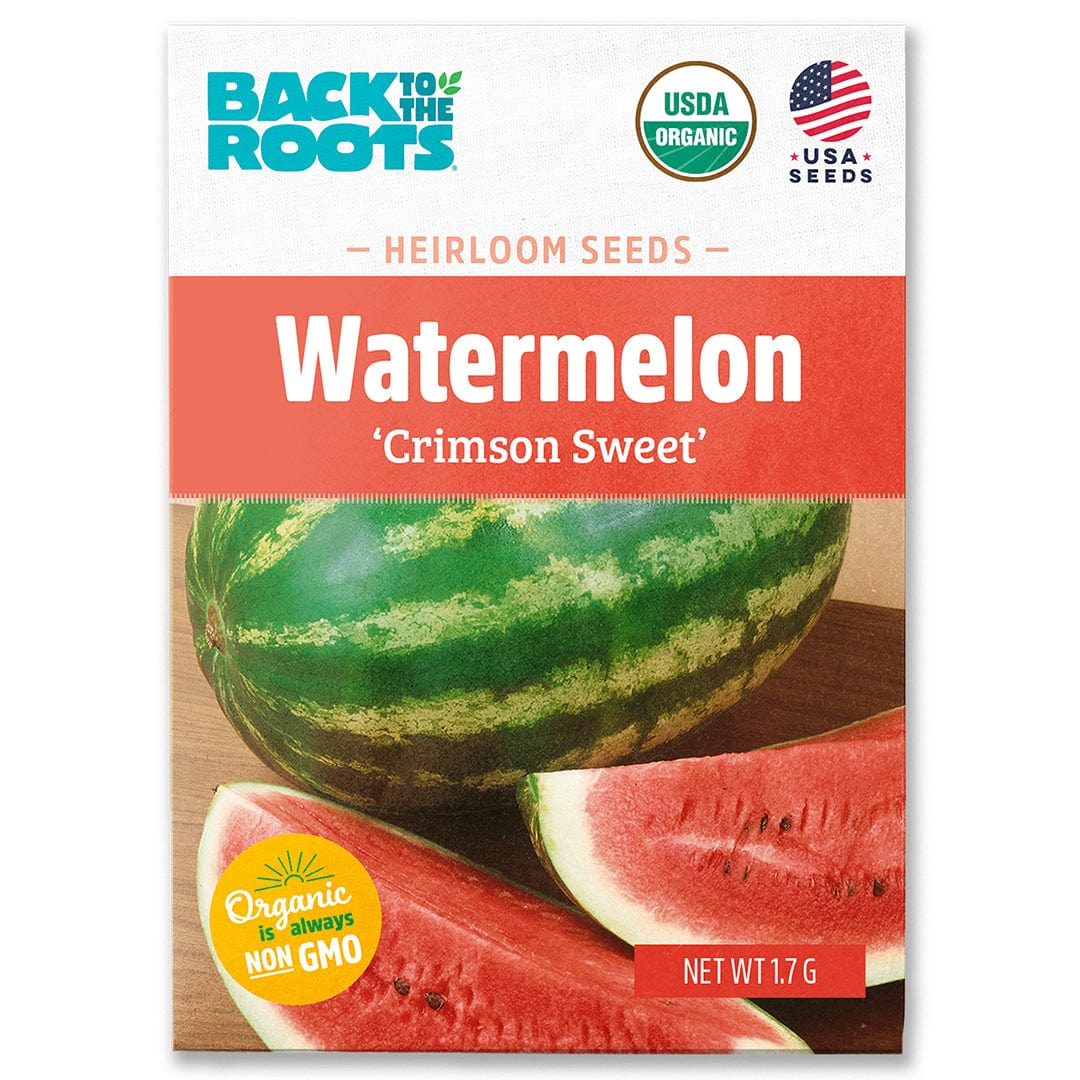
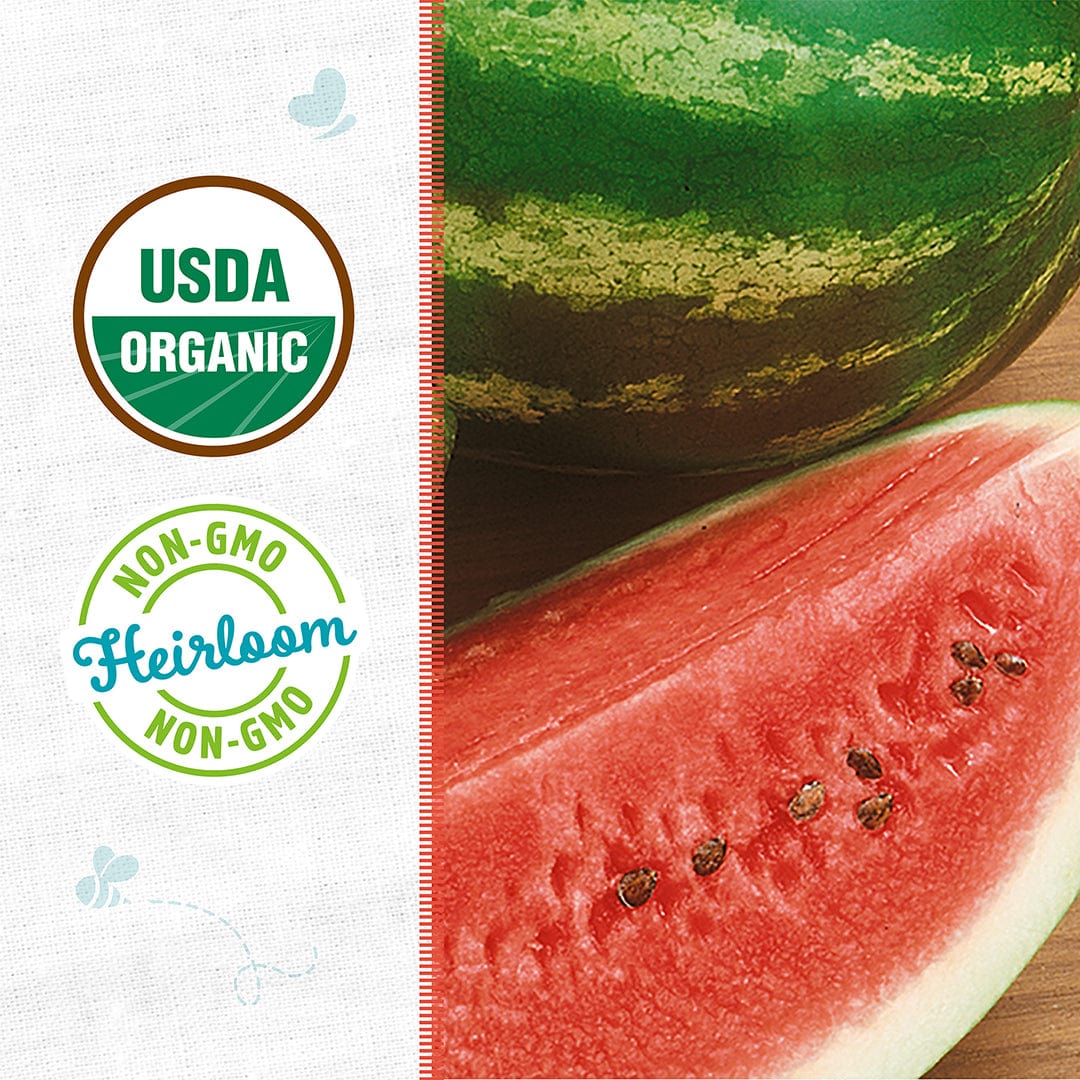
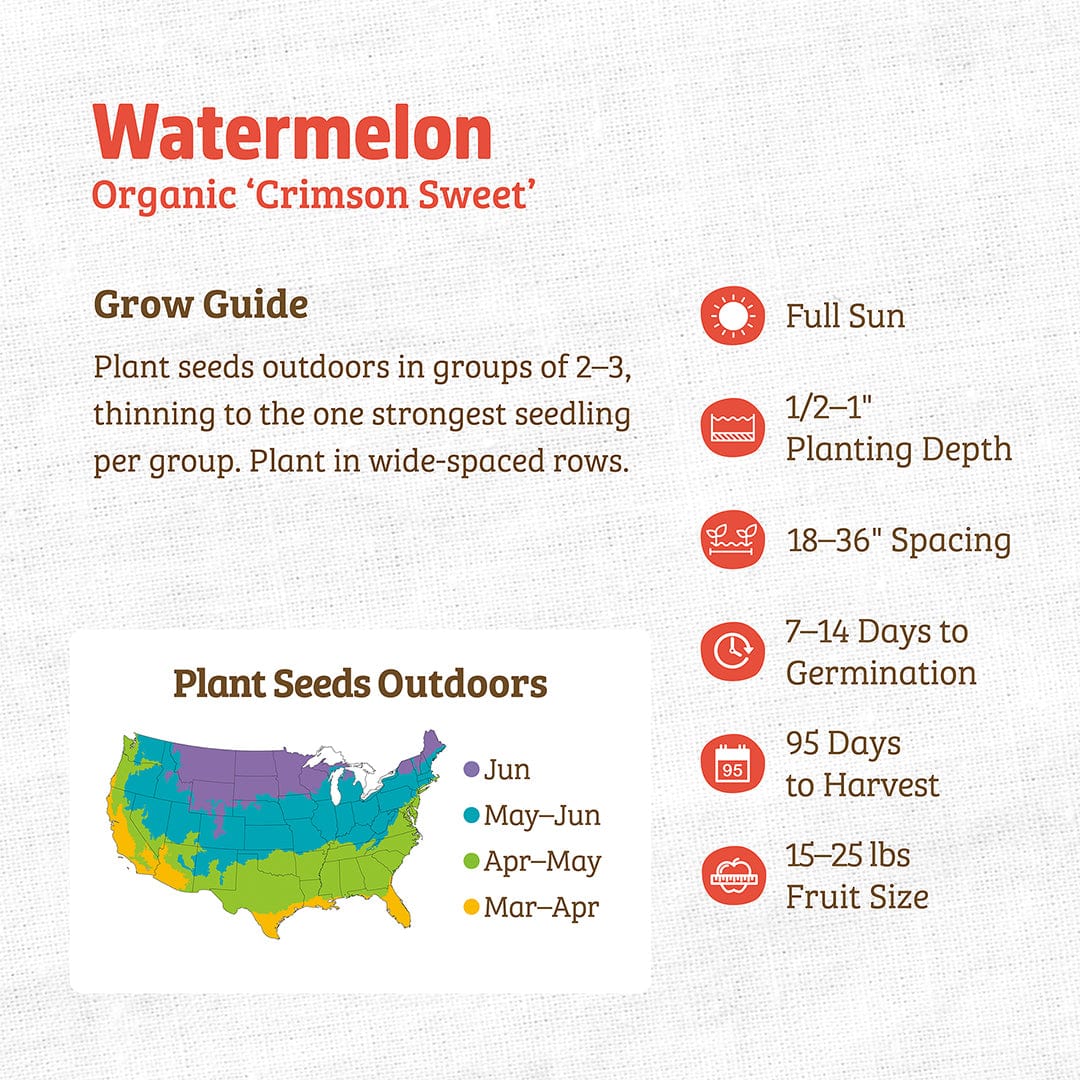
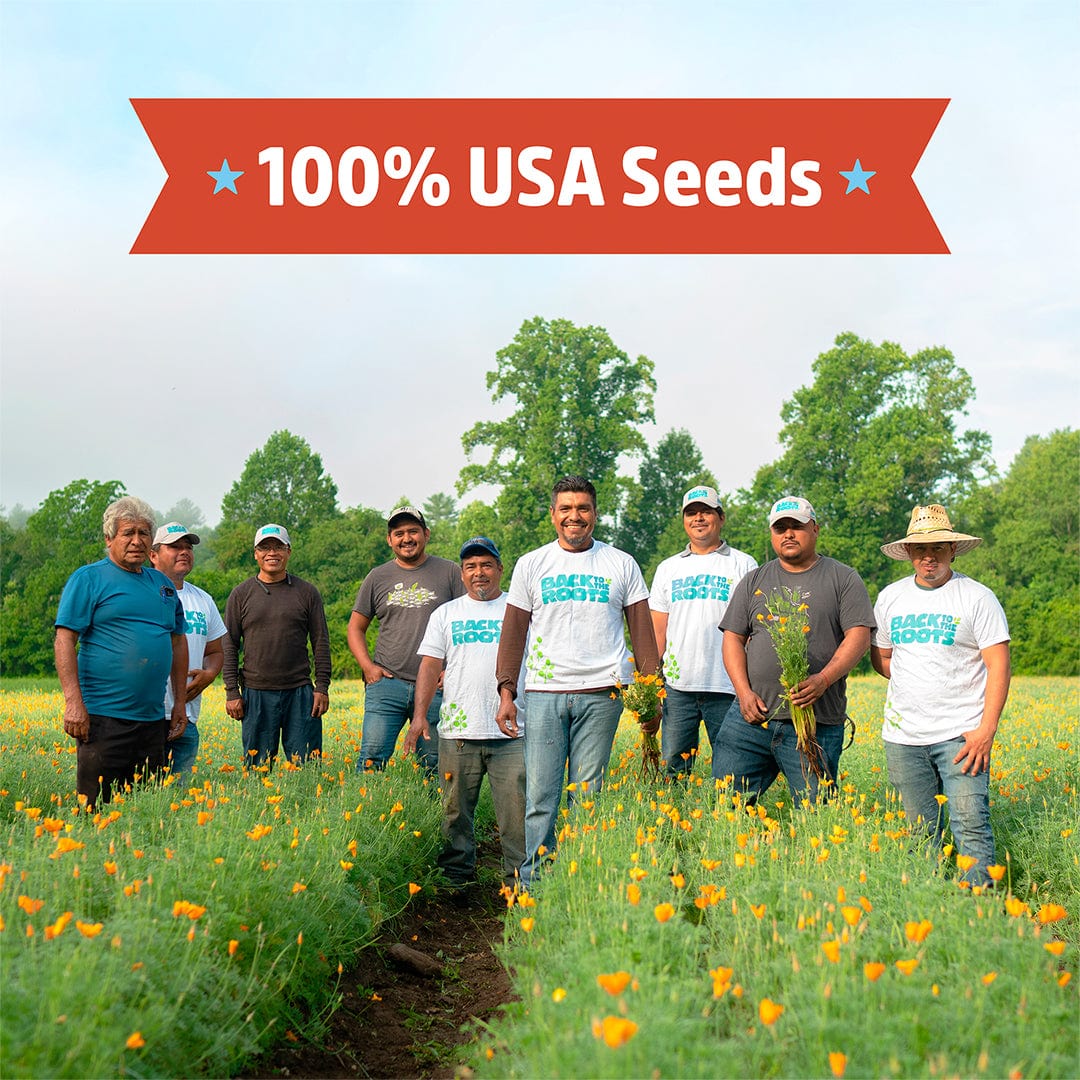
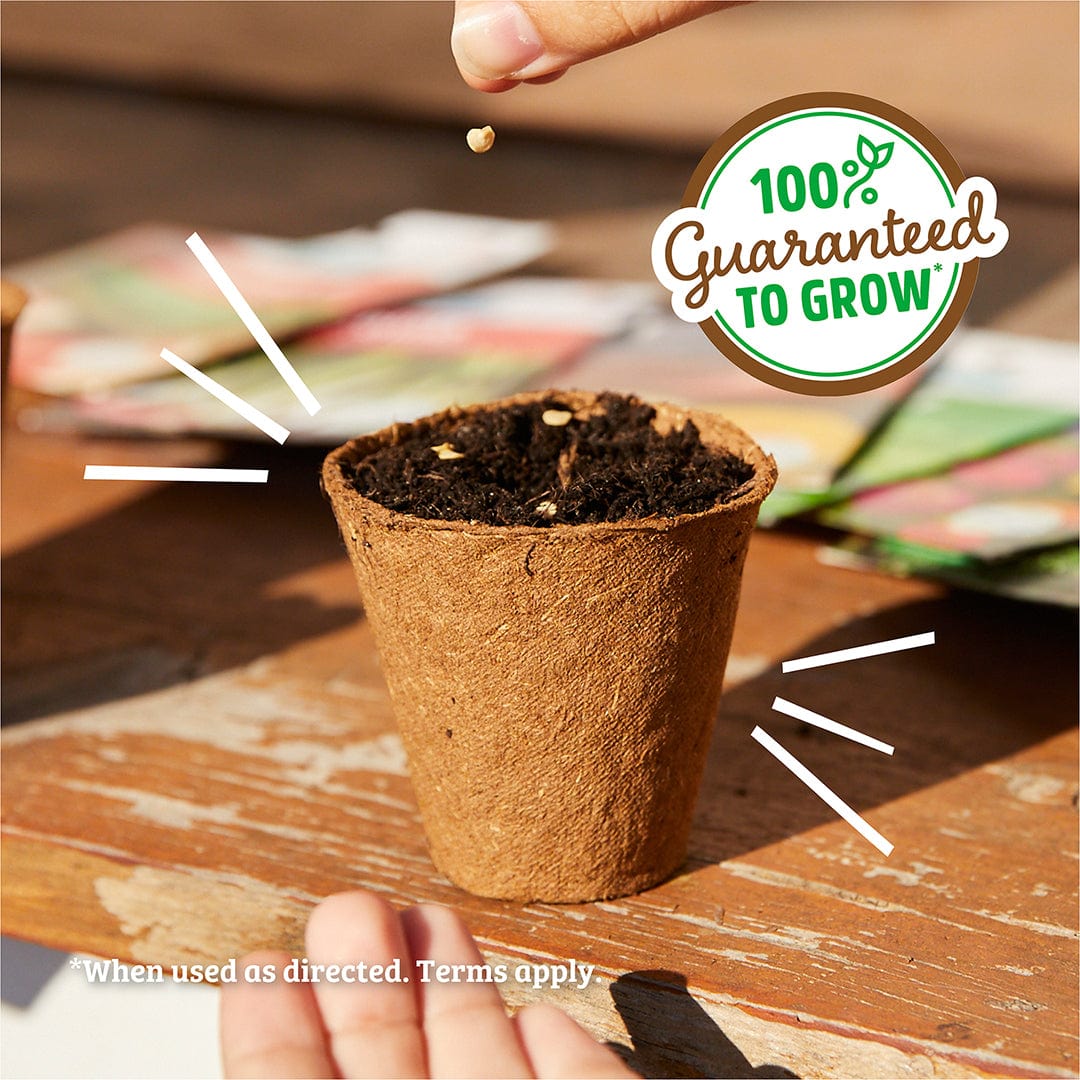
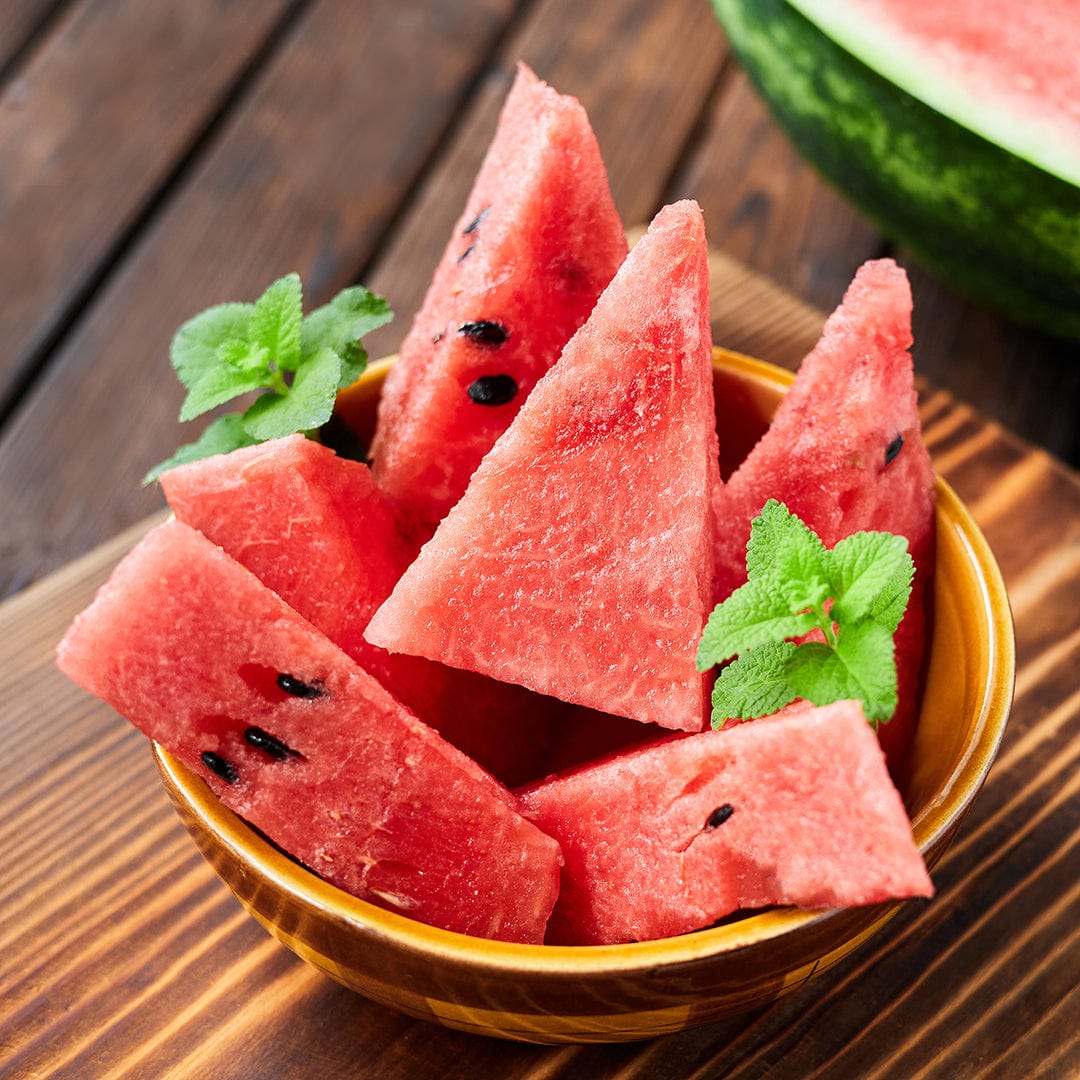
Save 10% Today w/ Code LetsGrow10
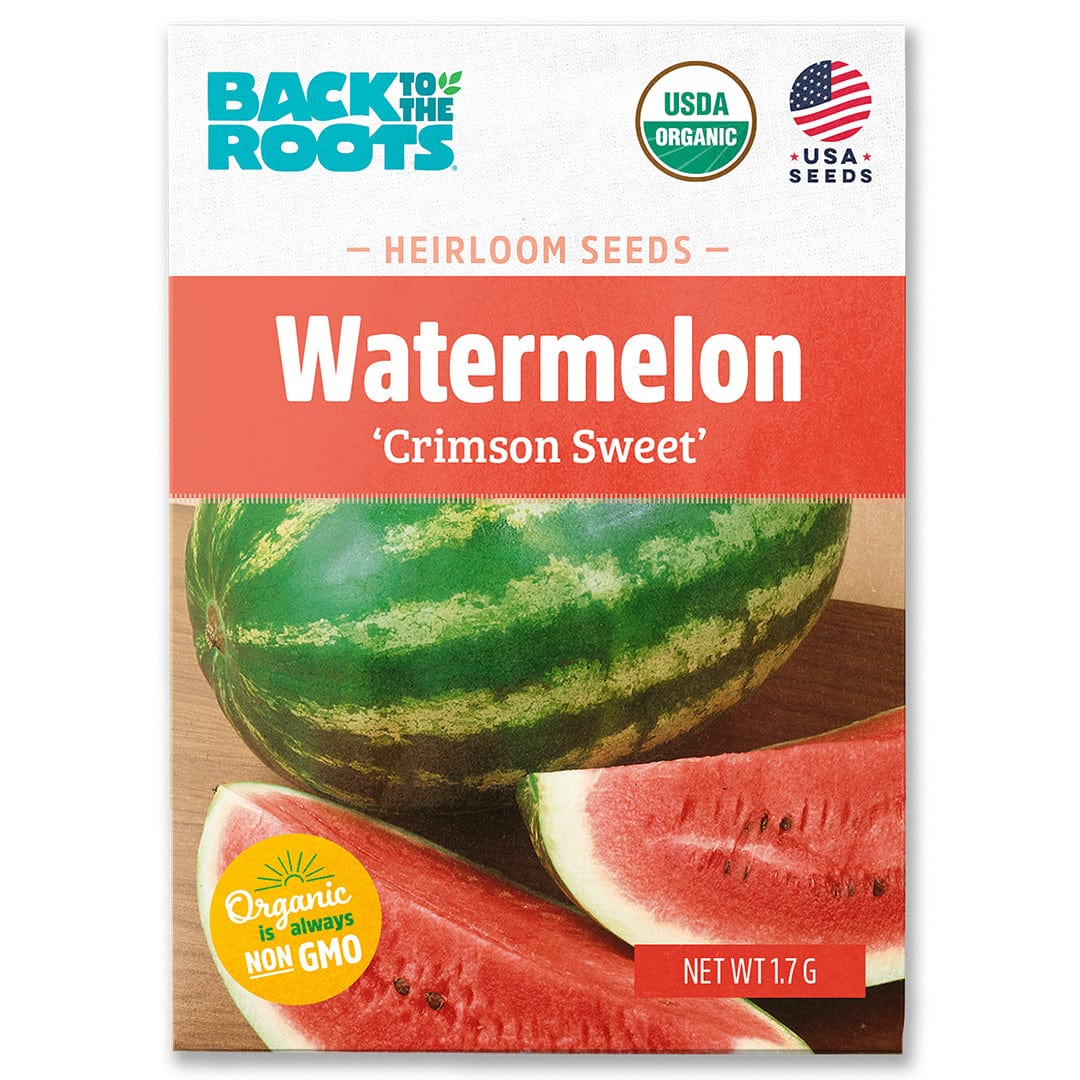
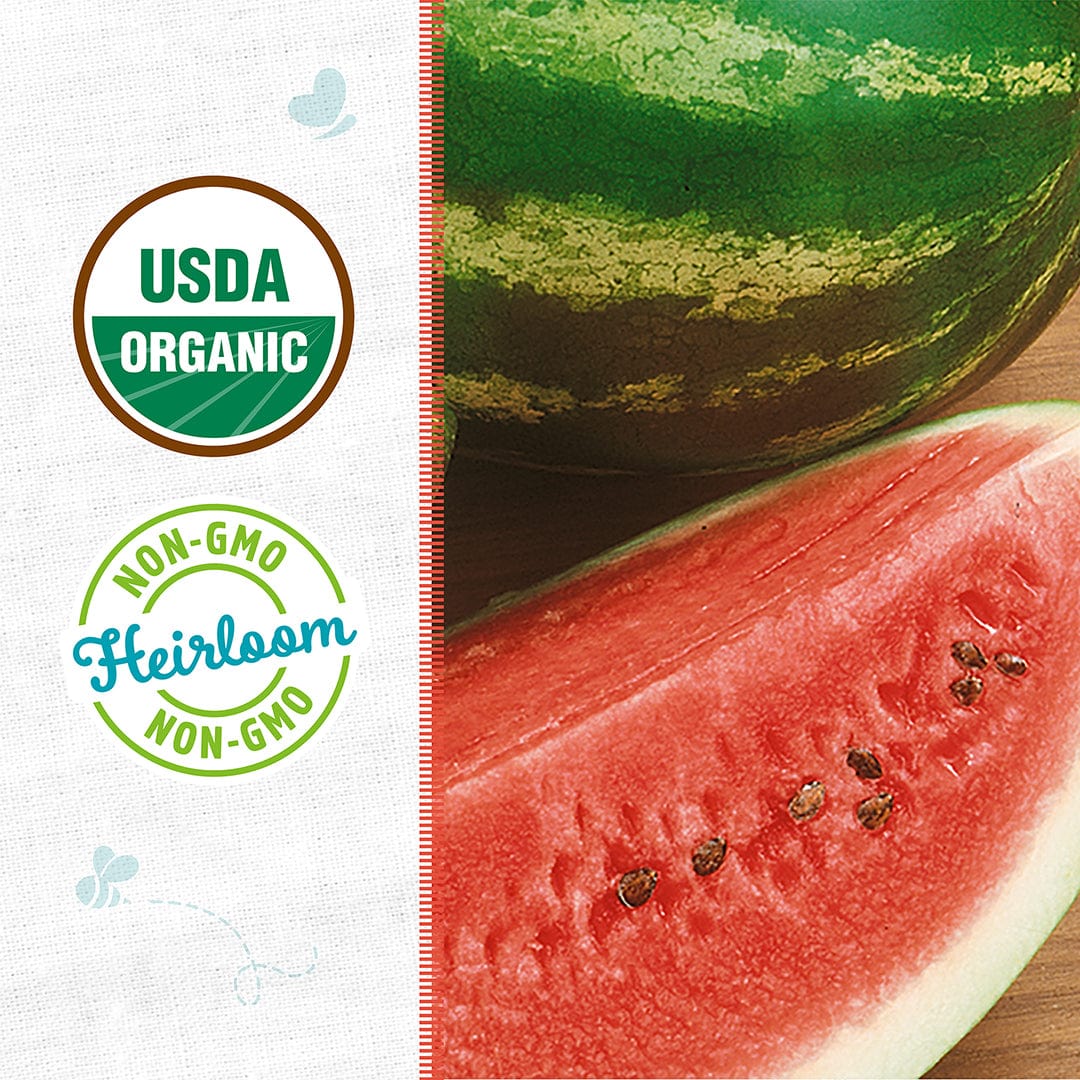
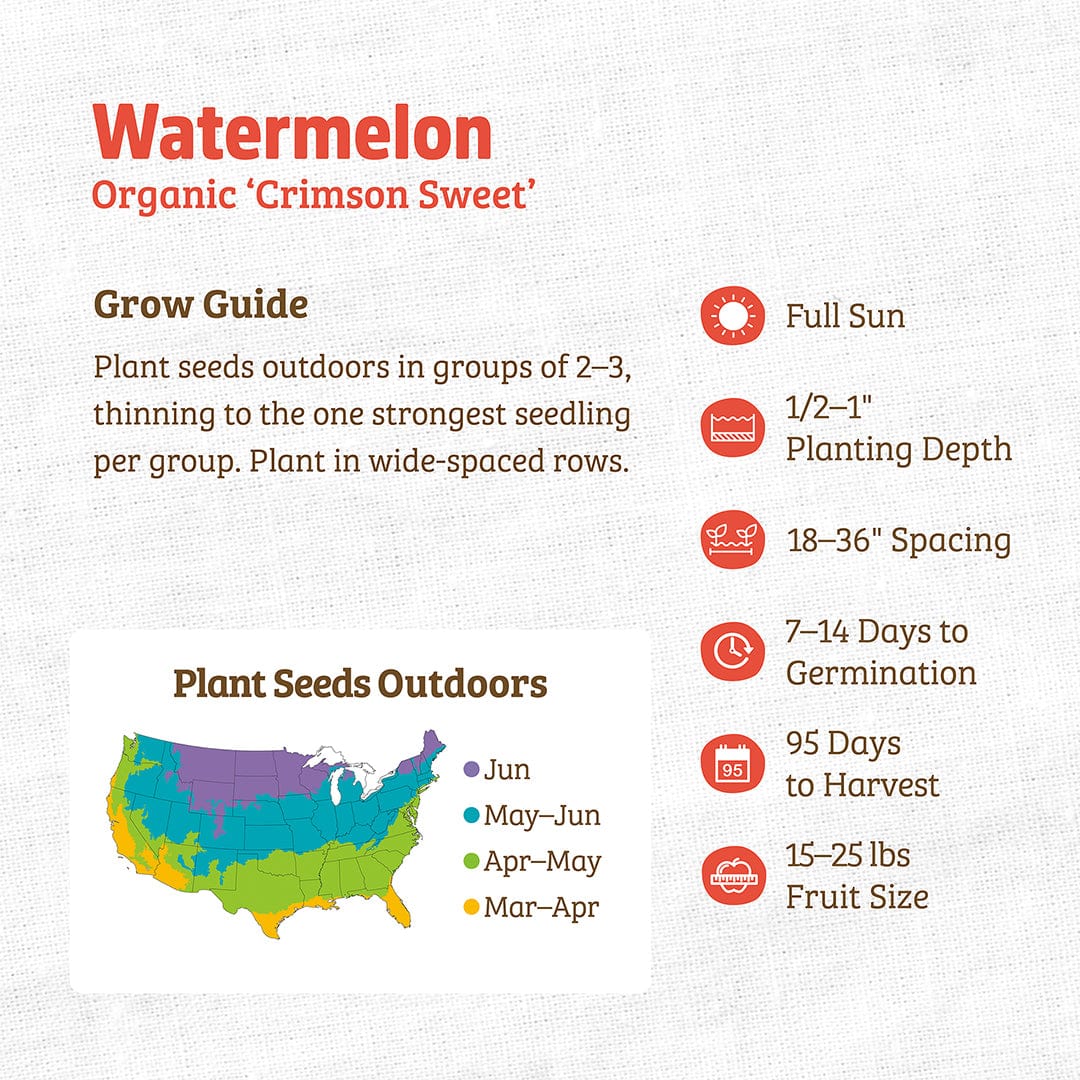
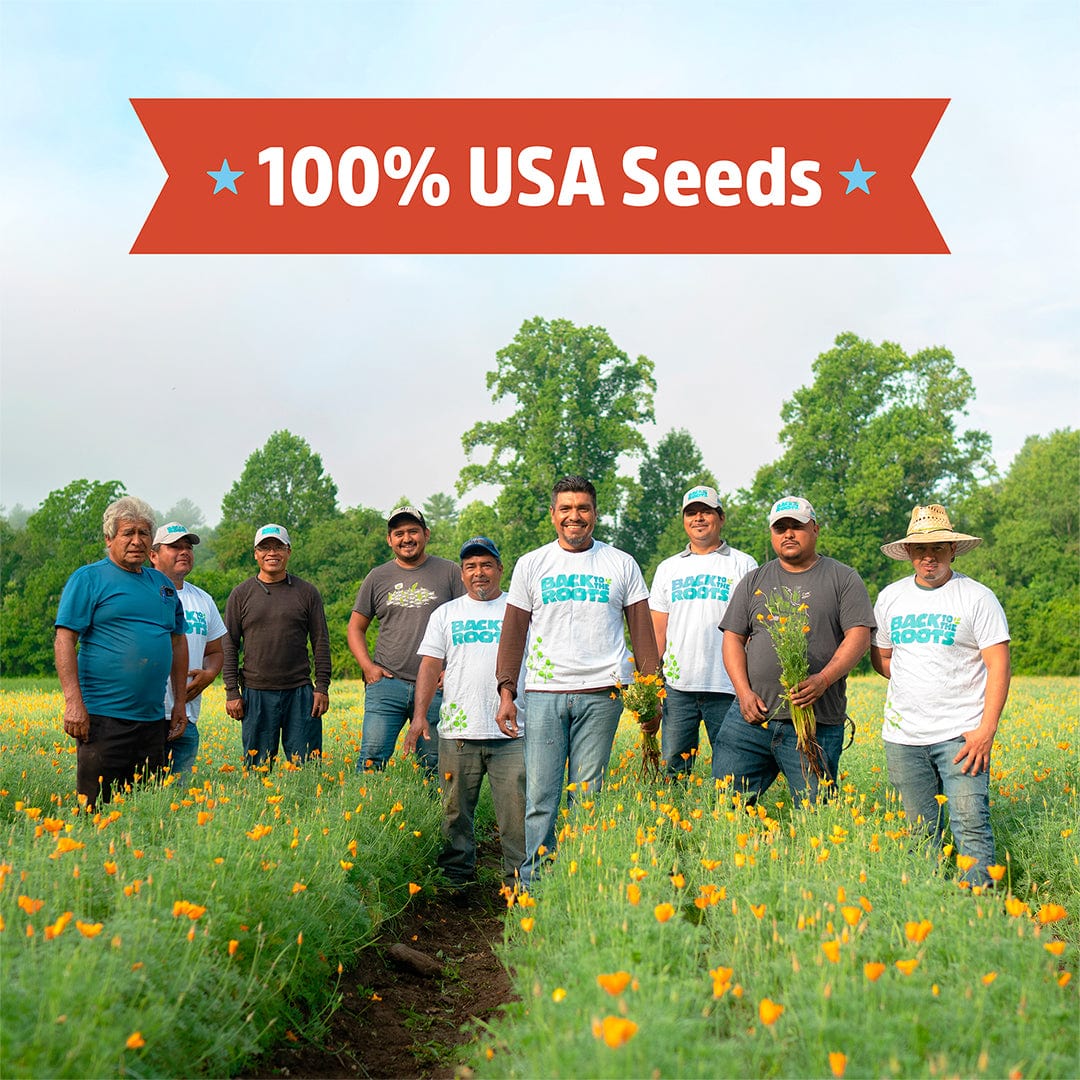
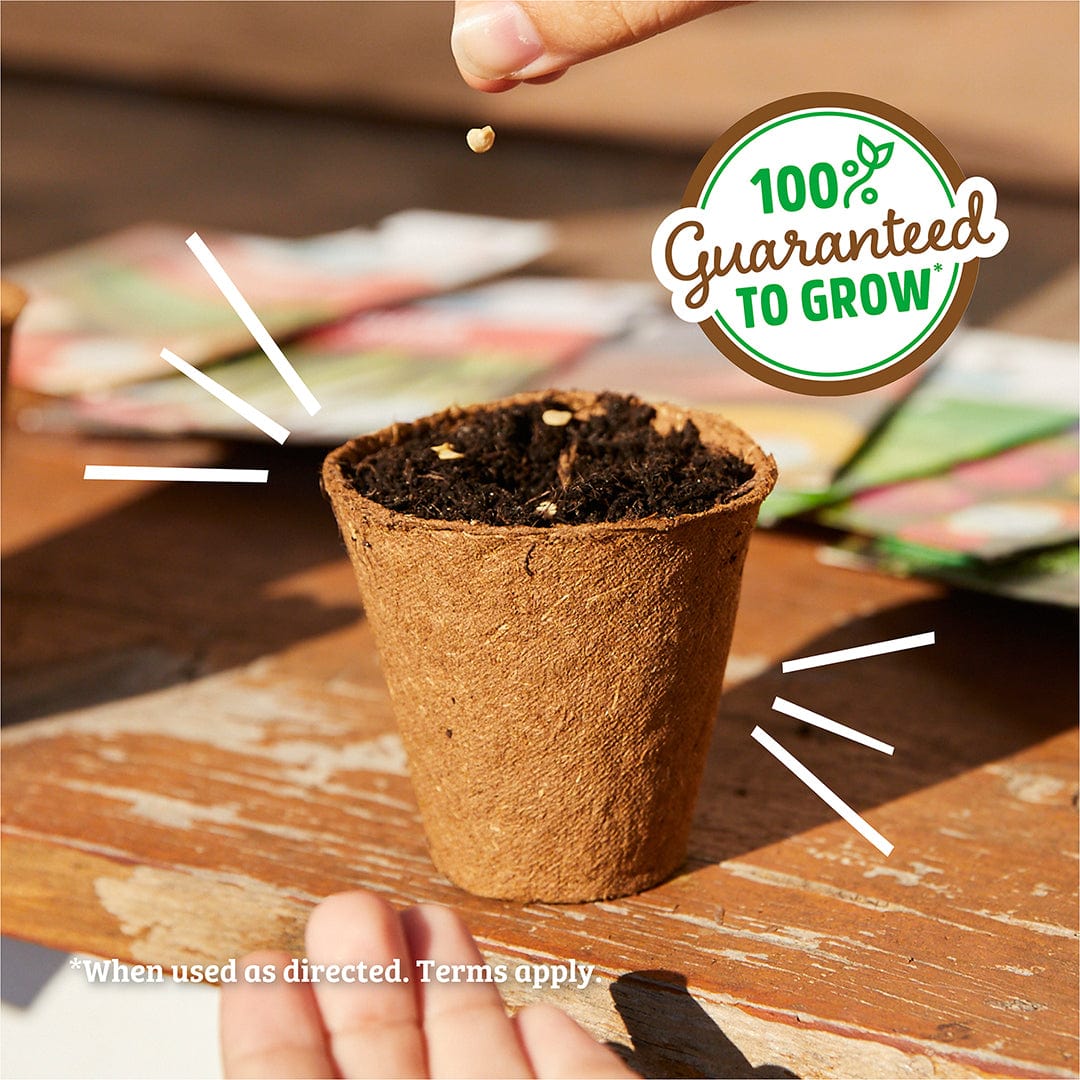
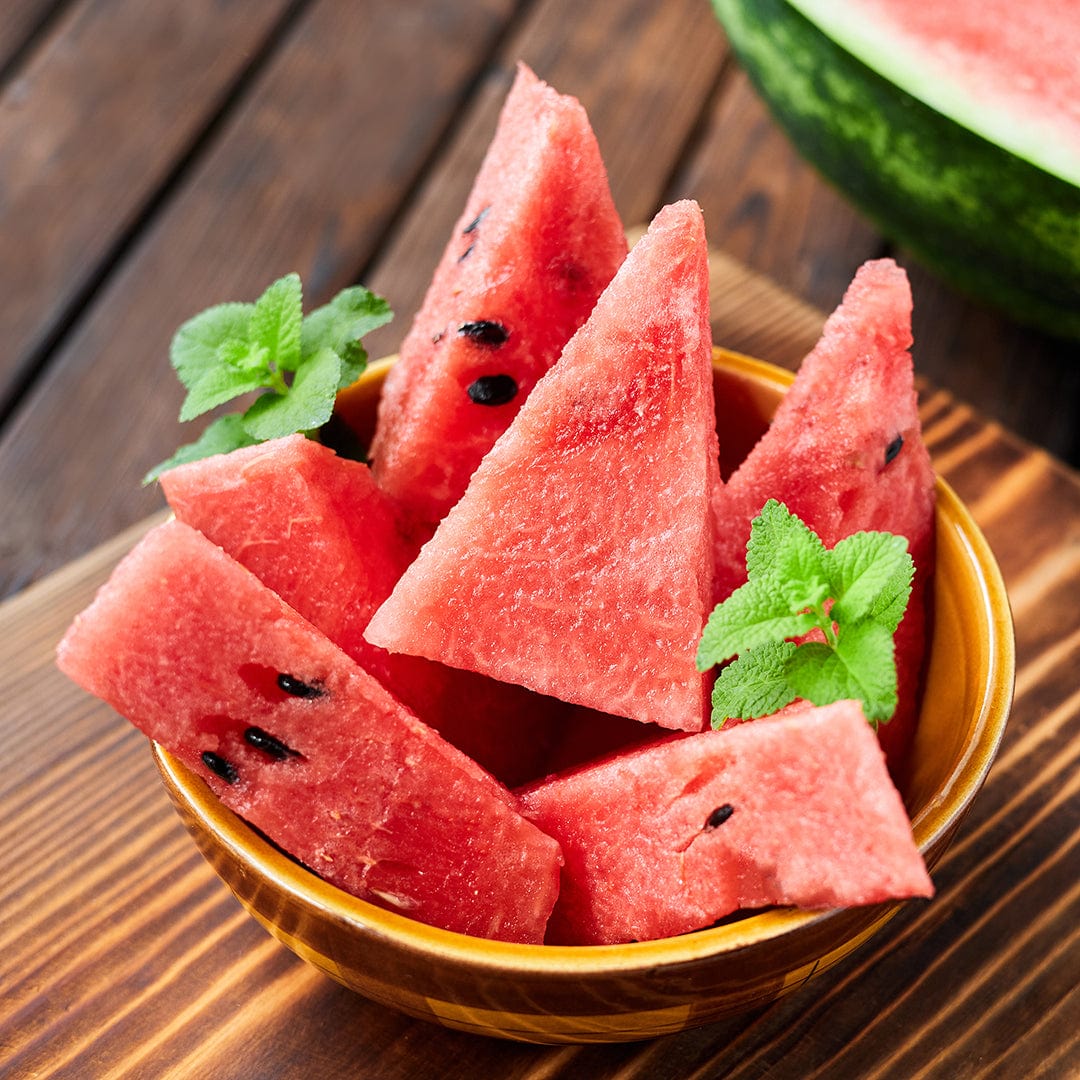
Everyone seems to love juicy watermelon in the summertime. Native to Africa, watermelons come in numerous different sizes and colors, all with delicious flesh inside. They grow spectacularly in warm climates with long growing seasons.
For soil, use a fertile, well-draining potting mix that’s high in organic matter. For the best quality melons, provide full sun (6+ hours of direct sunlight) and consistent soil moisture during the growing season. Watermelons also need ample vining space, so plan accordingly.
Watermelons are most commonly planted directly outdoors in the garden once soil is above 70°F. Use our grow calendar tool to find specific planting dates for your region! Seeds germinate in 7-14 days.
Plant seeds in groups of 3, ½–1" deep, 18-36" apart in rows that are 6 feet apart. Plant seeds in hills or hilled rows to keep soil temperature high and provide good drainage. Thin to 1 plant per group as seedlings develop.
"Sudden wilt" is a complex disease and cold weather stress syndrome in late summer when plants have a heavy set of ripening watermelons, can cause plants to wilt almost overnight. Keep plants healthy with good fertility and irrigation to avoid sudden wilt.
Protect against cucumber beetles with floating row covers applied at germination.
There are 3 ways to tell when a watermelon is ripe: 1) the tendril nearest the point on the vine where fruit stem attaches is browning/dead; 2) the spot where the fruit rests on the ground is yellow; and 3) the classic mystery — you hear "punk," as opposed to "pink" or "pank," when you flick the melon with your fingers. Stems should be cut with a sharp knife close to the fruit.
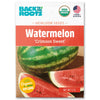
Organic Watermelon Seeds — 'Crimson Sweet'
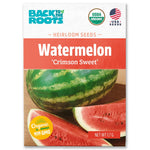






Be the first to know about new collections and exclusive offers.